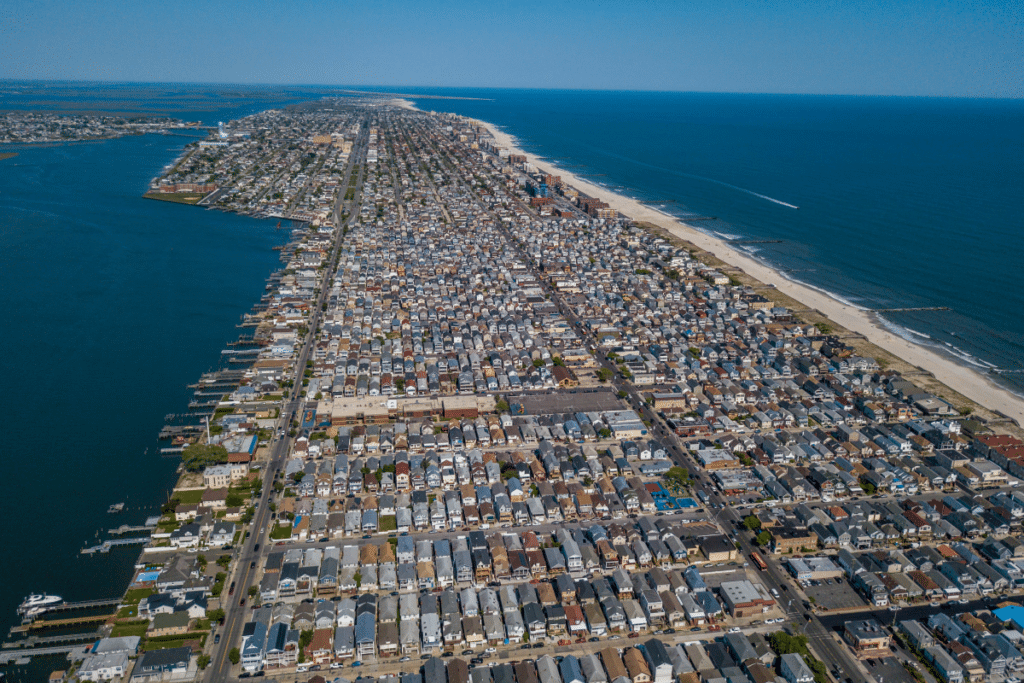
If you live on Long Island, you know that our climate brings humid summers, coastal storms, and damp conditions—perfect for mold growth. Unfortunately, mold isn’t just an eyesore; it can pose serious health risks and damage your home. In this post, we’ll explore why Long Island homes are particularly vulnerable to mold and what you can do for effective mold prevention in Long Island homes.
Why Long Island Homes Are Prone to Mold
1. High Humidity Levels
Long Island experiences warm, humid summers with moisture-heavy air. Mold thrives in damp environments, making basements, attics, and bathrooms prime locations for growth. Even in cooler months, indoor humidity can remain high due to poor ventilation. This makes mold prevention in Long Island homes particularly crucial.
2. Coastal and Storm Exposure
With proximity to the ocean, Long Island homeowners face frequent rain, nor’easters, and hurricanes. Water intrusion from heavy storms or flooding can create ideal conditions for mold to develop, especially if moisture isn’t dried out quickly. Ensuring proper mold prevention in Long Island homes after storms is essential to minimize damage.
3. Older Homes and Poor Ventilation
Many homes on Long Island are older, with outdated ventilation systems or insulation that traps moisture. Poor airflow in attics, crawl spaces, and bathrooms can contribute to persistent dampness, encouraging mold growth. If you live in an older house, mold prevention in Long Island homes becomes even more important.
How to Prevent Mold in Your Home
The good news? You can take proactive steps to minimize mold risks and protect your home. Here are some essential tips for effective mold prevention in Long Island homes:
1. Control Indoor Humidity
- Keep indoor humidity between 30-50% by using dehumidifiers, especially in basements and other damp areas. This is a crucial aspect of mold prevention in Long Island homes.
- Use air conditioners in the summer to reduce moisture buildup and maintain a dry environment.
2. Improve Ventilation
- Run exhaust fans in bathrooms and kitchens to remove excess moisture. Proper ventilation plays a significant role in preventing mold.
- Open windows on dry days to allow fresh air circulation and reduce indoor humidity.
- Ensure your attic and crawl spaces are properly ventilated to prevent mold from developing in these hidden areas.
3. Address Water Leaks Immediately
- Regularly inspect your roof, gutters, and plumbing for leaks. Addressing leaks early is essential for preventing mold growth in your home.
- Fix any signs of water damage promptly to reduce the risk of mold taking hold.
- After storms or flooding, dry out affected areas within 24-48 hours to stop mold from forming in damp spaces.
4. Use Mold-Resistant Materials
- Opt for mold-resistant drywall and paint in moisture-prone areas such as bathrooms and basements. This can go a long way in long-term mold prevention.
- Consider installing a vapor barrier in crawl spaces to reduce moisture and prevent mold growth.

When to Consider Professional Mold Testing
While prevention is key, sometimes mold issues go unnoticed until they become a major problem. You should consider professional mold testing if:
- You notice a musty odor in your home but don’t see visible mold.
- You or family members experience unexplained allergy-like symptoms.
- Your home has had past flooding or water damage.
- You’re purchasing a home and want to check for hidden mold issues.
Professional testing can help identify mold in hidden areas, such as behind walls or under flooring.
Protect Your Home and Health from Mold
Long Island’s humid climate makes mold prevention in Long Island homes a must for homeowners. By controlling moisture, improving ventilation, and acting quickly on leaks, you can protect your home and health from mold-related issues. If you’re ever unsure about a potential mold problem, professional testing can provide peace of mind and help you take the right steps toward remediation. The Centers for Disease Control and Prevention (CDC) offers a wealth of information on health risks and how to manage mold in your home, while the New York State Department of Health provides helpful state-specific guidance on mold prevention.
